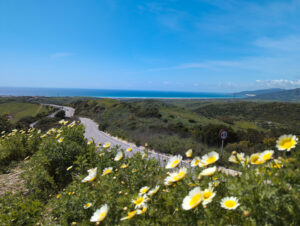Tarifa is a paradise for kitesurfers — wind, waves, and endless adrenaline. But as I quickly discovered during my three weeks there, even this windy haven has its off days. Some mornings the Levante was so fierce my kite resembled a possessed jellyfish. Other days, the wind vanished completely, leaving my kite sagging like a wet noodle. Normally, this might frustrate anyone on a mission to master kitesurfing, but for me, these “windless” days were golden opportunities to explore the surrounding coast, hilltop towns, and even the unique thrill of hopping across continents.
I was in Tarifa partly to focus on my master’s thesis (thankfully remote work was possible), but I also took advantage of every windless or chaotic-wind day to explore. Ironically, these off-wind adventures often ended up being more memorable than the adrenaline-fueled kite sessions.
What’s Inside This Post
- Windless Wanderings: Roman ruins at Bolonia, sand dunes that make your legs question your life choices, and secret beaches tucked behind hills.
- History & Hilltops: Dramatic views from Cape Trafalgar, whitewashed Vejer de la Frontera, and Semana Santa processions that give chills.
- Isla de Tarifa: Europe’s southernmost point, history-rich but slightly lost in translation.
- Hopping Continents: Tanger, Morocco — organized chaos, vibrant medina mazes, and sensory overload.
- The Verdict: Why windless days secretly stole the show.
Windless Wanderings: Roman Ruins, Giant Dunes & Secret Beaches
When Windguru flashed its dreaded “no kiting today” warning, I seized the moment to explore west of Tarifa, where the coastline remains largely untouched by development.
Playa de Bolonia & Baelo Claudia:
Just 20 minutes west of Tarifa lies Bolonia, a sweeping bay with golden sand, turquoise water, and one of the most spectacular Roman sites in Andalusia: Baelo Claudia. Founded in the 2nd century BC, this town was a hub of Roman trade with North Africa, particularly for fish products like garum — the pungent fermented fish sauce prized throughout the empire. The layout of the city is remarkably preserved: a forum for civic life, a basilica for law, temples dedicated to Jupiter, Juno, and Minerva, and a theatre cleverly built into the hillside. Wandering through the ruins feels like stepping into a living history book — and if you squint just right, you can almost hear the echo of merchants arguing over fish vats and amphorae.
Dominating the western end of Bolonia is the Duna de Bolonia, a sand dune over 30 meters high and 200 meters wide. Climbing it is deceptively exhausting: two steps forward, one slide back, and occasional questioning of life choices. But from the top, you get a panoramic view that stretches from the bay and pine forests all the way to the hazy outline of Africa — a reminder of the ancient trade routes Romans once navigated.
Playa de los Alemanes:
Further along, Playa de los Alemanes offered a quieter, more exclusive escape. Steep hills covered in lush vegetation and modern villas back the beach, giving it a feeling of private seclusion. The name comes from German expatriates who settled here, attracted by the landscape and tranquility. My attempt at a shortcut via a coastal track failed (fences, apparently), but the detour led to a funny encounter with a talkative hitchhiker — proving once again that even “wrong turns” can enrich the story.

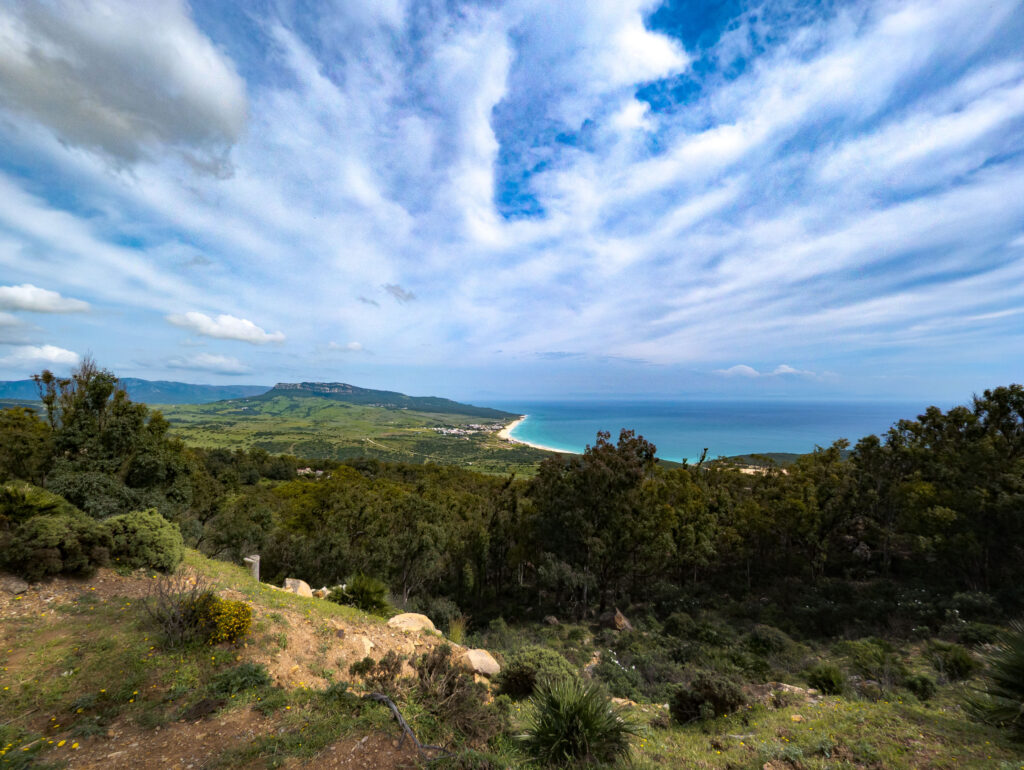
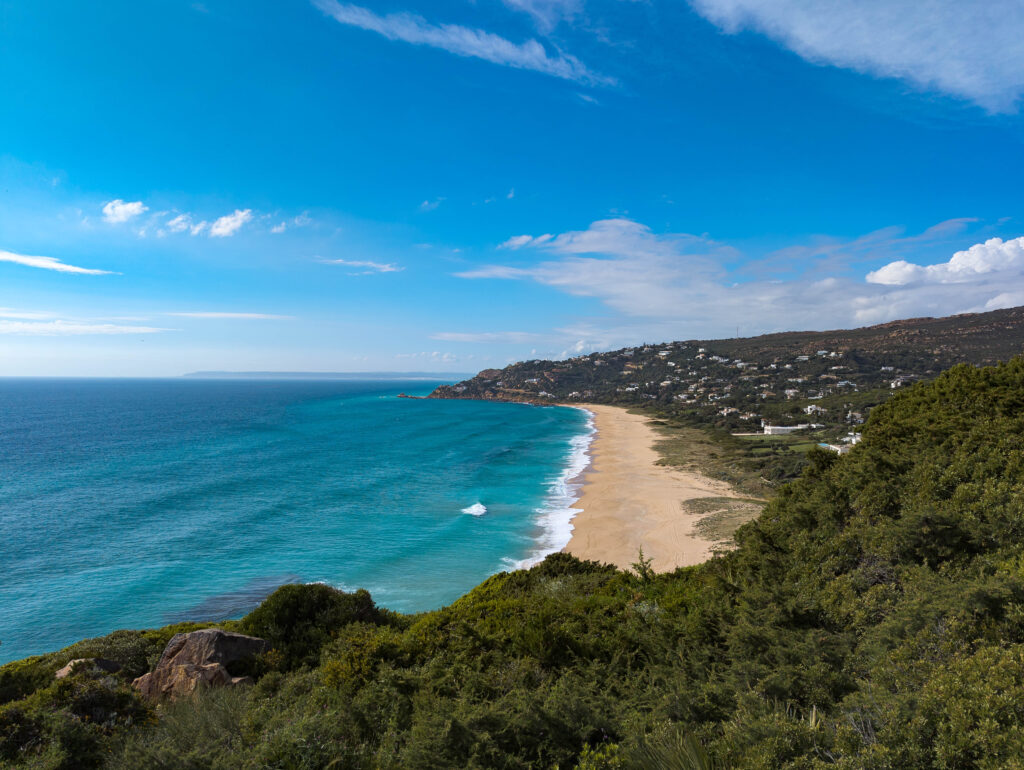

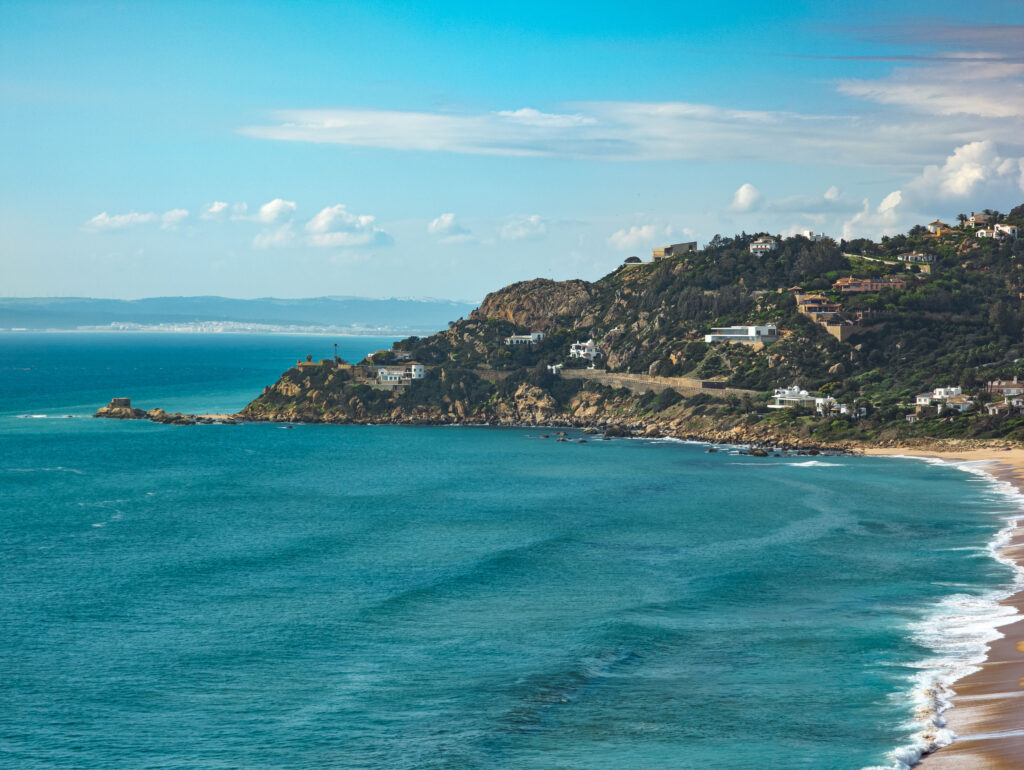
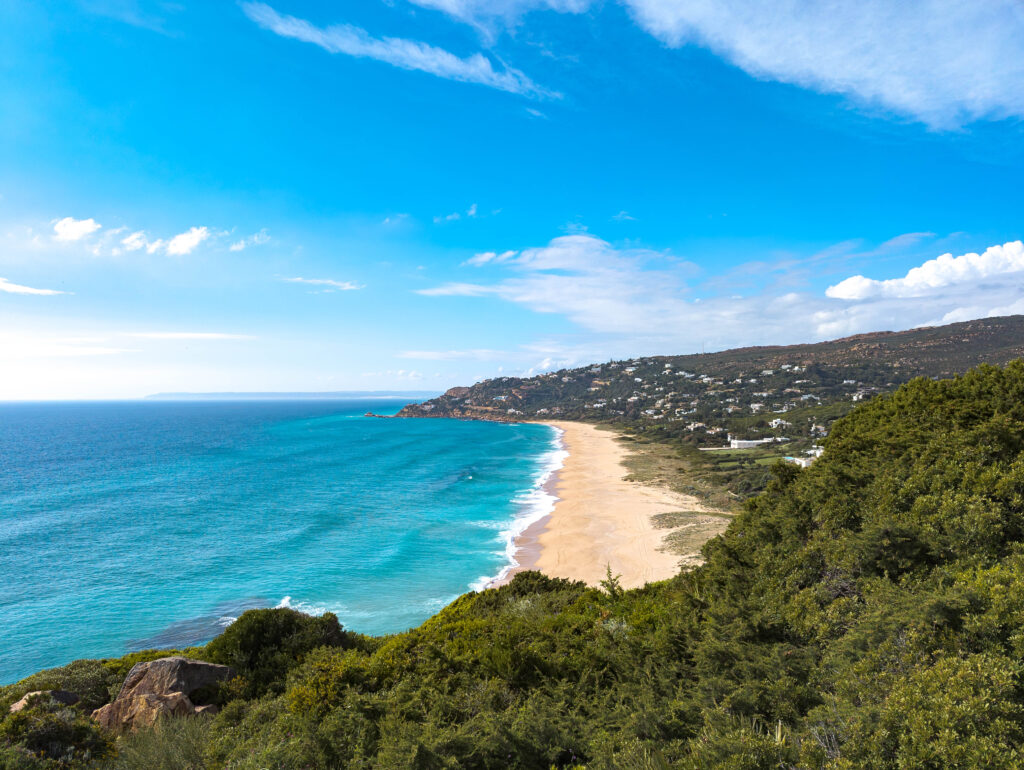
History & Hilltops: Cape Trafalgar & Vejer de la Frontera
The windless wanderings continued inland, where history reigns supreme.
Cape Trafalgar & Faro de Trafalgar:
The 34-meter lighthouse, built in 1860, watches over the headland where the famous Battle of Trafalgar occurred on October 21, 1805. Here, Admiral Nelson (who famously died aboard HMS Victory) crushed the combined fleets of France and Spain, establishing over a century of British naval dominance. Standing on the windswept cape, waves crashing at my feet, it’s easy to imagine cannon smoke and the chaos of battle — or just to dramatically pose for photos pretending you’re part of the Royal Navy. The surrounding beaches, Playa del Faro and Playa de Zahora, are relatively empty on windy-off days, giving the whole place a haunting, cinematic atmosphere.
Vejer de la Frontera:
Driving inland, I ascended to Vejer de la Frontera, one of Andalusia’s most picturesque pueblos blancos. This hilltop town, perched 200 meters above the plains, was a strategic defensive point during the Moorish occupation (711–1248). Its maze-like cobbled streets, whitewashed houses, hidden patios, and medieval walls make every corner feel like a movie set. Visiting during Semana Santa, I caught part of a solemn procession — drums, hooded figures, incense — a combination of awe-inspiring and slightly spooky. Vejer also has an artisan scene, with tiny galleries, craft shops, and excellent local cuisine. The streets at dusk, warm sunlight reflecting off white walls, were pure magic.

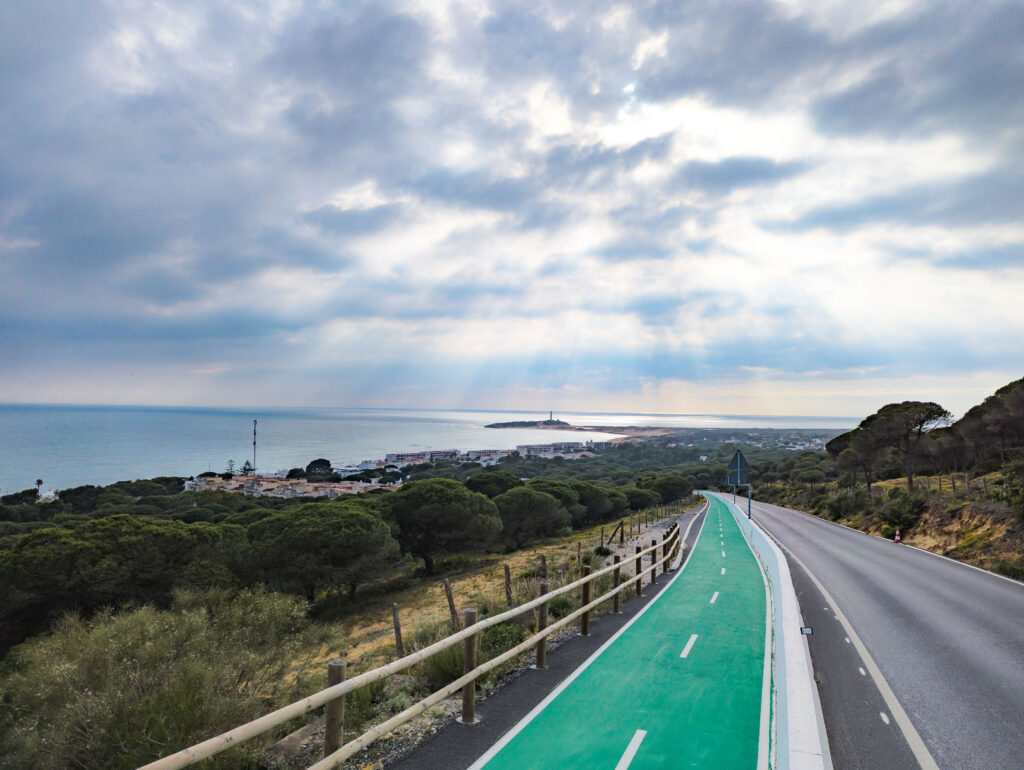
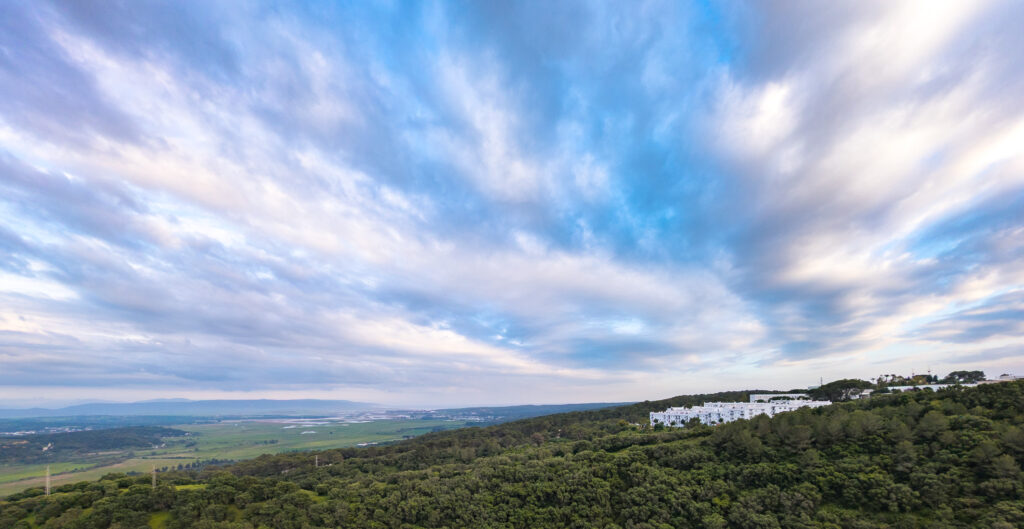
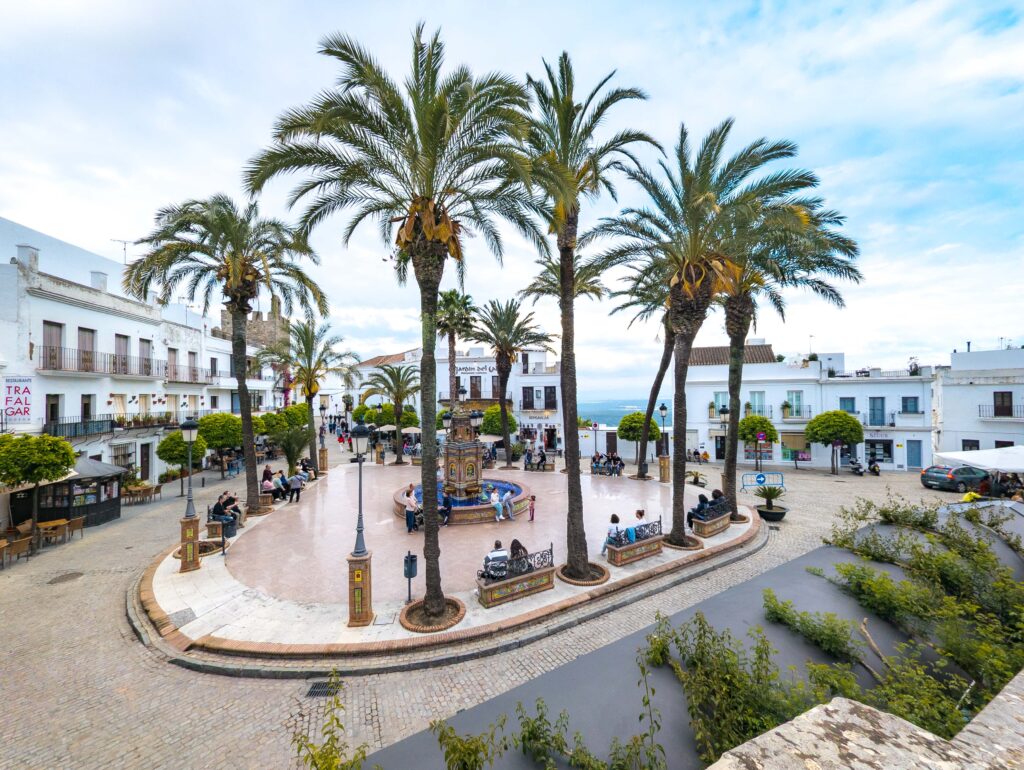
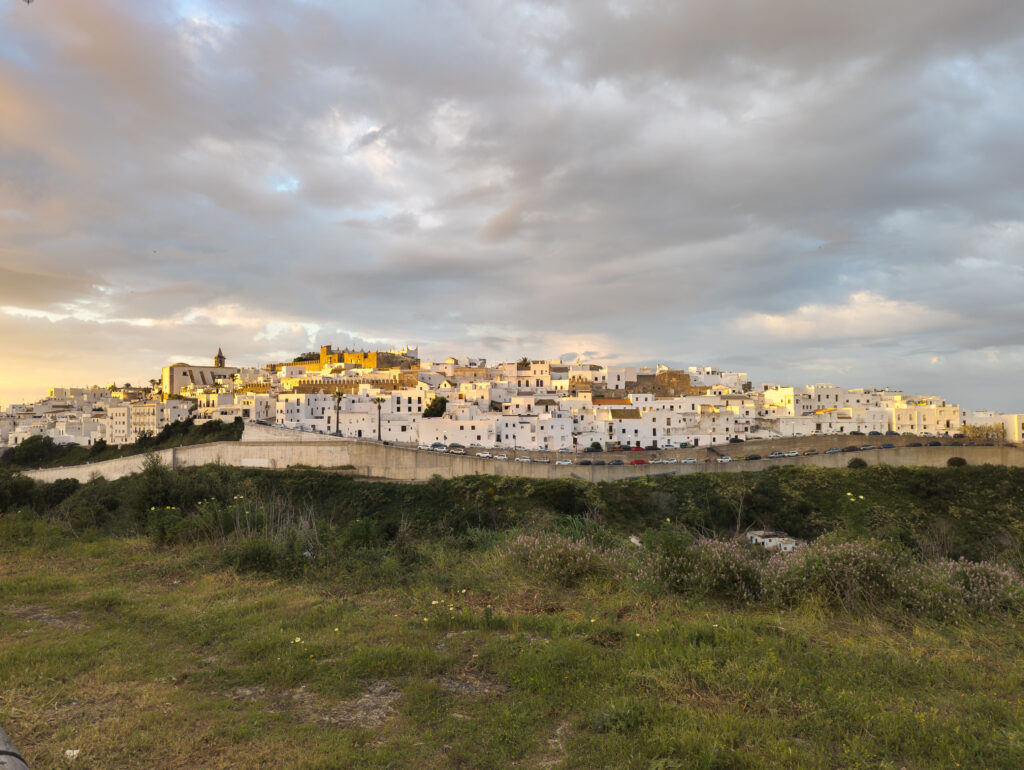
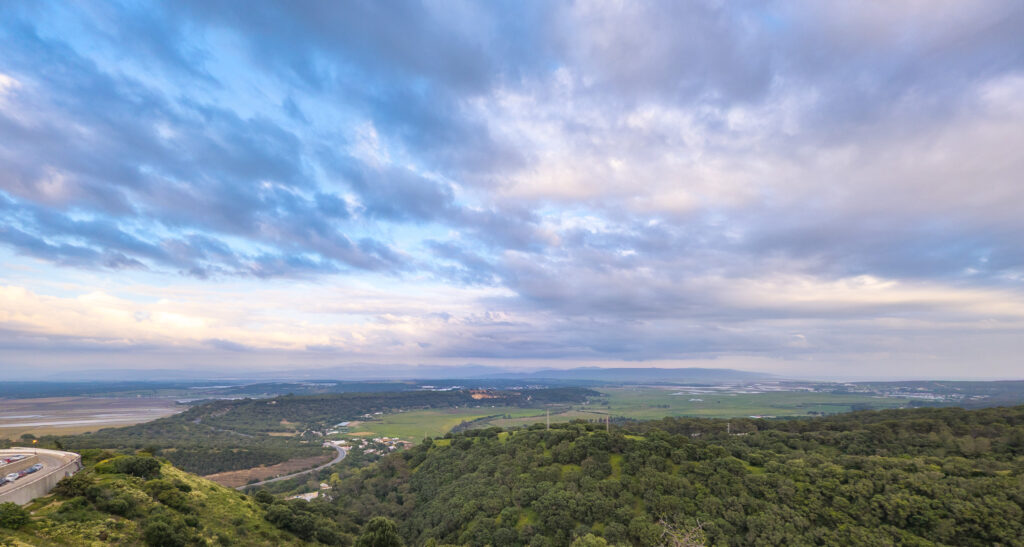
Isla de Tarifa: Europe’s Southernmost Point (Lost in Translation)
Another windless morning led me to Isla de Tarifa, the southernmost tip of continental Europe. The island has strategic significance: for millennia, it served as a lookout controlling the entrance to the Mediterranean. There’s a lighthouse, fortifications, and signs of Phoenician and Roman presence.
Booking a guided tour is mandatory, but we arrived without a reservation and luckily were allowed in. My guide spoke only Spanish, and my grasp of the language is… limited. Translation fail aside, the island itself is gorgeous: cliffs, waves, and sweeping views of the Strait of Gibraltar. Even if half the history sailed over my head, the place deserves a visit — just maybe brush up on Spanish first.
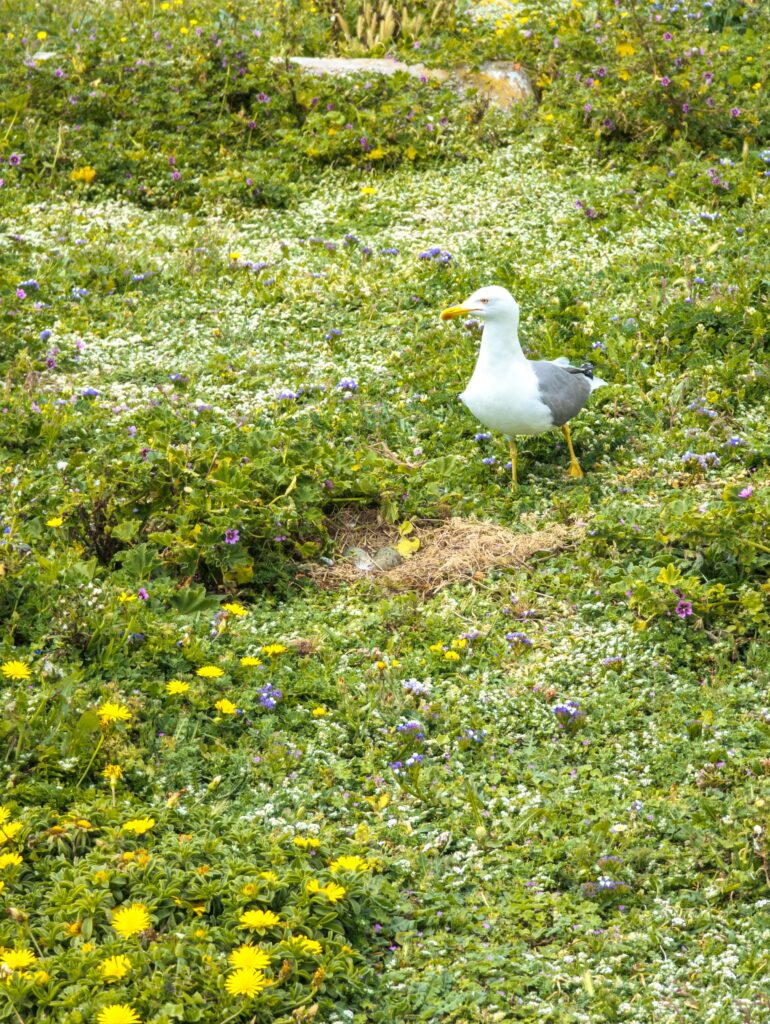
Hopping Continents: Tanger, Morocco – A Whirlwind Adventure
Just 14 km away, Africa is tantalizingly close. I signed up for an organized day trip to Tanger (€82, including ferry, transport, guide, and lunch).
Panoramic Coach Tour: Modern Tanger, hillside villas, royal palaces, and sweeping views of the Strait of Gibraltar. The guide pointed out famous former residents, spies, and artists like Paul Bowles and William Burroughs — a bohemian, almost conspiratorial history condensed into one morning.
Cap Spartel & Lighthouse: Dramatic views where Atlantic meets Mediterranean — symbolic, photogenic, and awe-inspiring.
Hercules Cave (Grottes d’Hercule): A mix of natural and man-made formations. Legend says Hercules rested here after his labors. The sea-facing opening vaguely resembles Africa, perfect for bragging rights on Instagram.
Camel Ride Photo Stop: Tourist cliché? Yes. Fun? Absolutely. Two euros for a quick photo with the Atlantic behind me.
The Medina & Kasbah: This is where the real magic happens. Narrow, bustling alleys filled with spices, textiles, lanterns, and mint tea aromas assault every sense. Vendors shout, bread bakes in communal ovens, prayer calls echo, and the Kasbah looms above, offering panoramic views and a museum tucked into its former palace buildings. Slightly getting lost and found again by the guide? Part of the charm.
Lunch & Artisan Shops: Standardized but tasty — tagine, couscous, salads, pastries, mint tea. Optional stops at artisan shops provided a peek into Moroccan craft traditions, from carpets to ceramics.
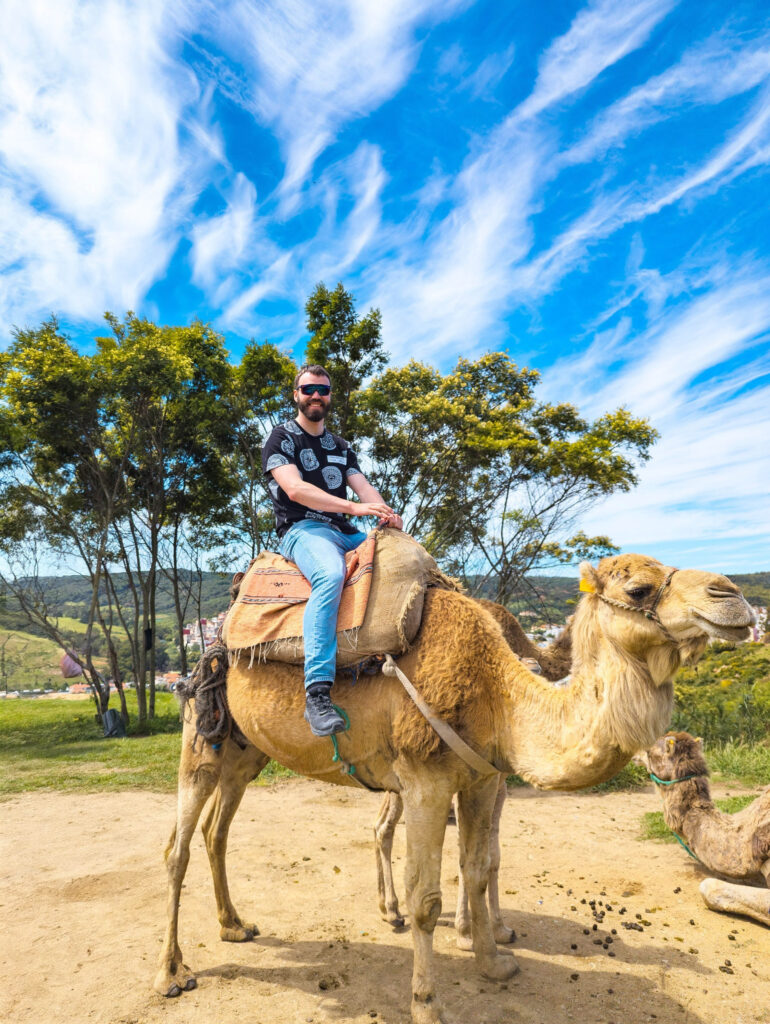
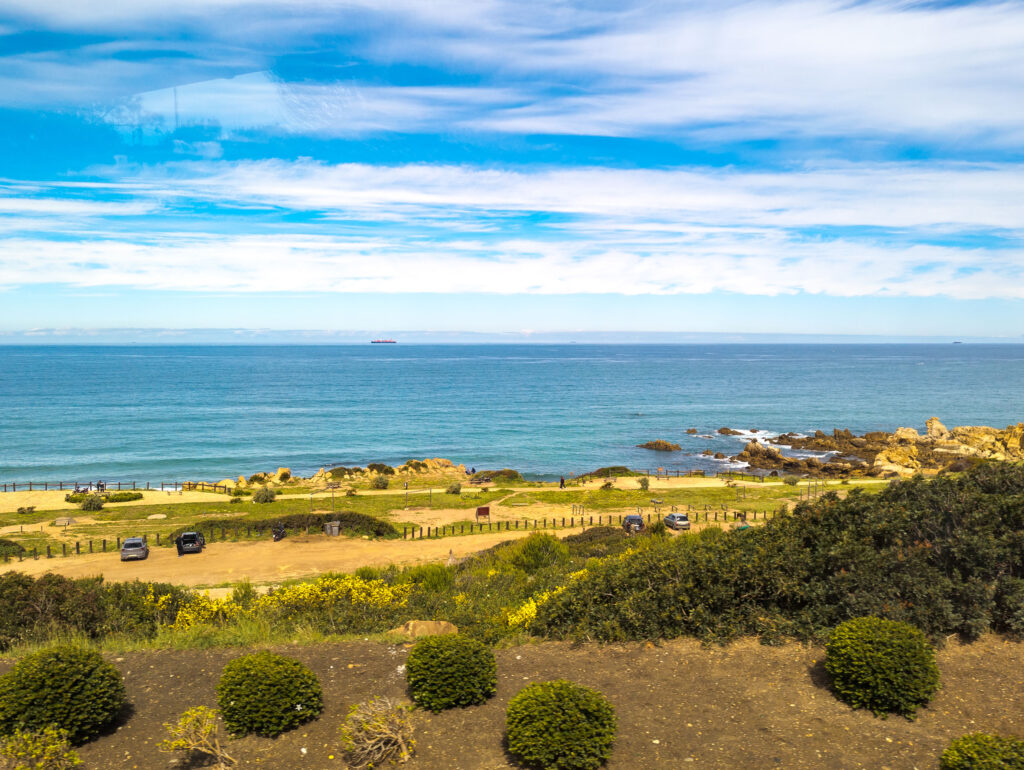
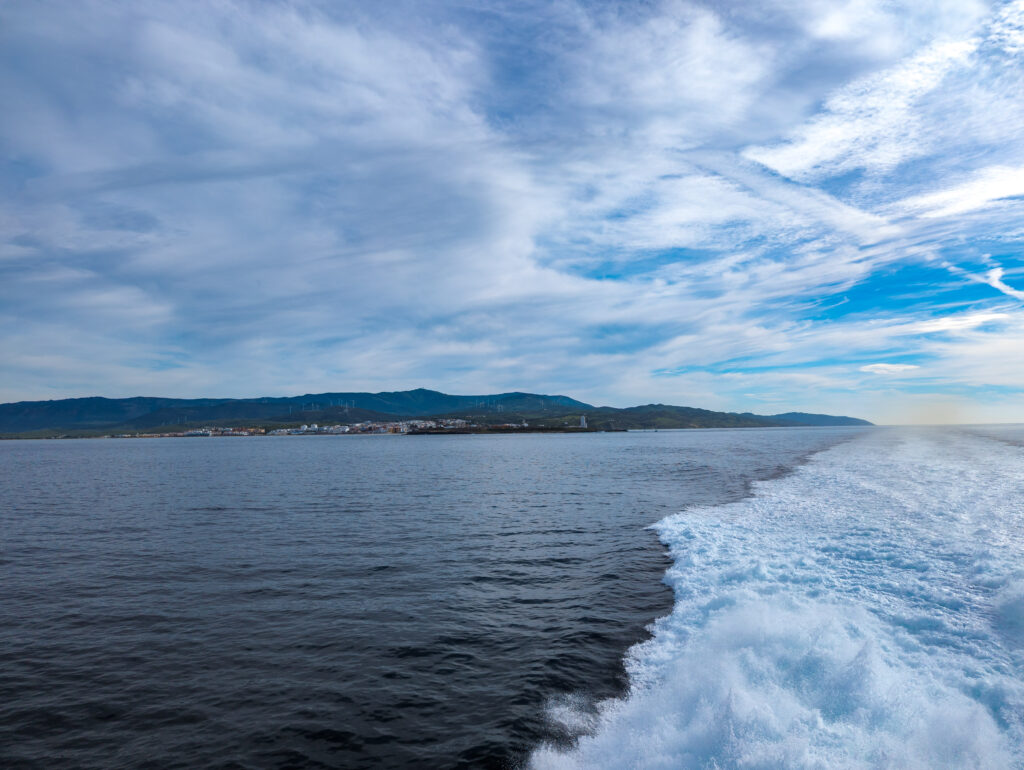
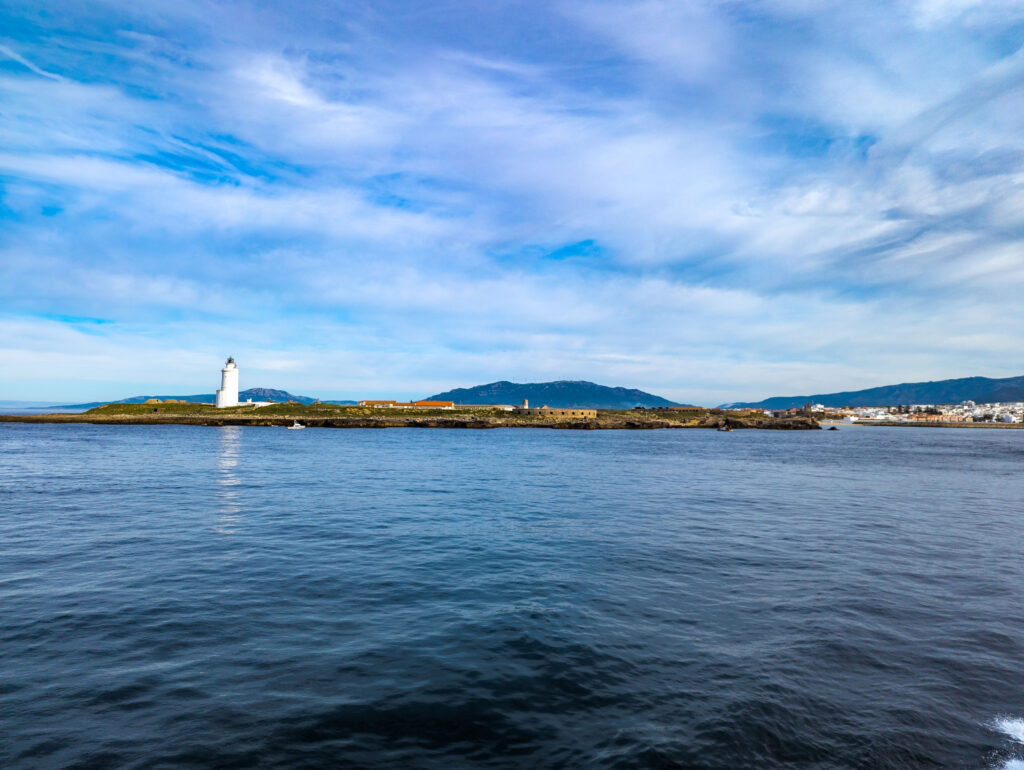
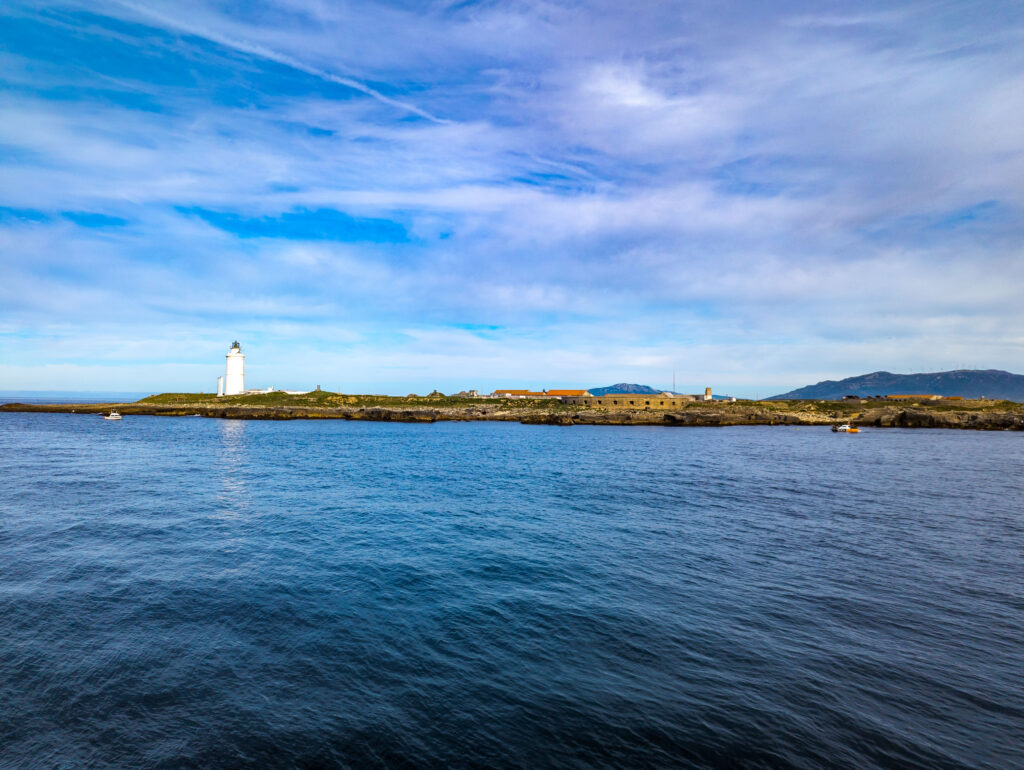

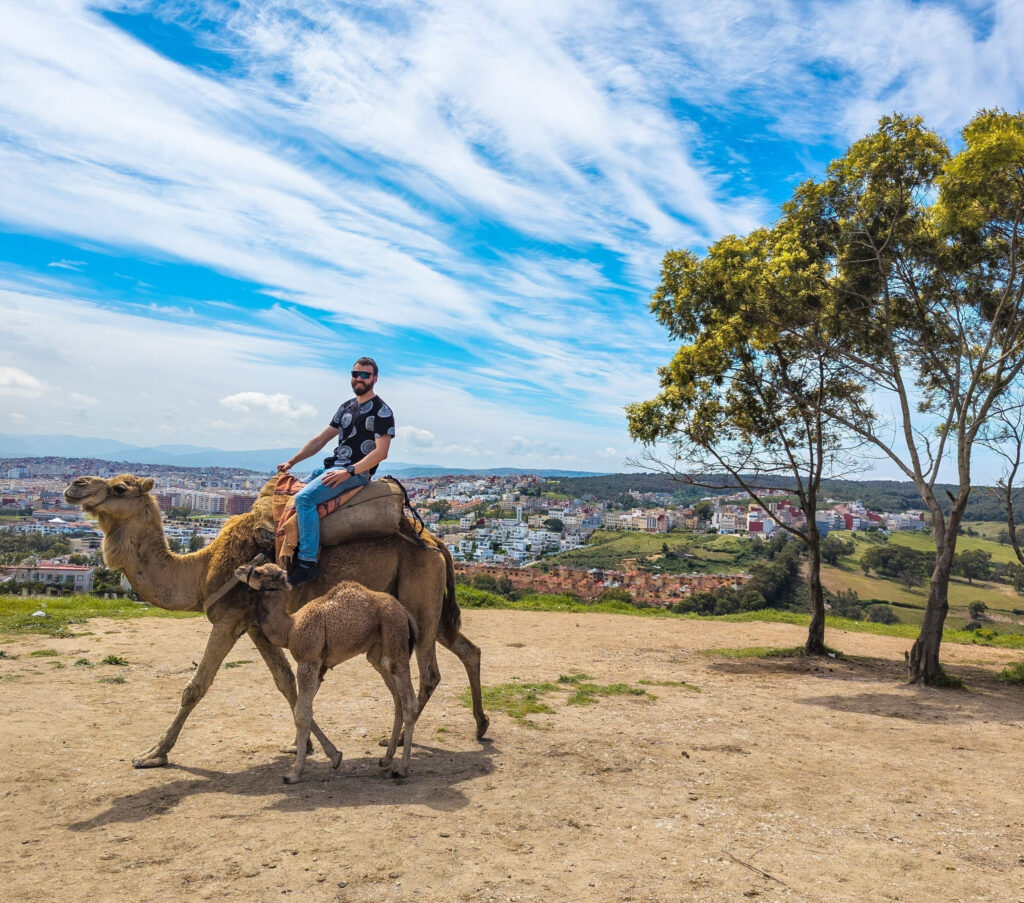
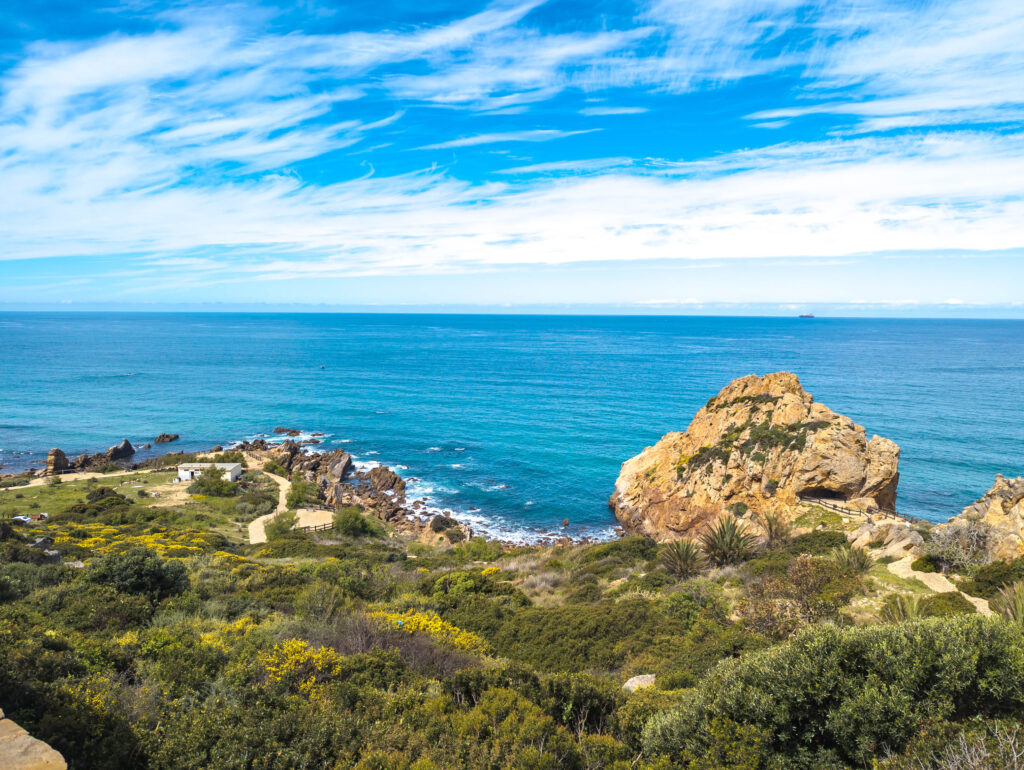
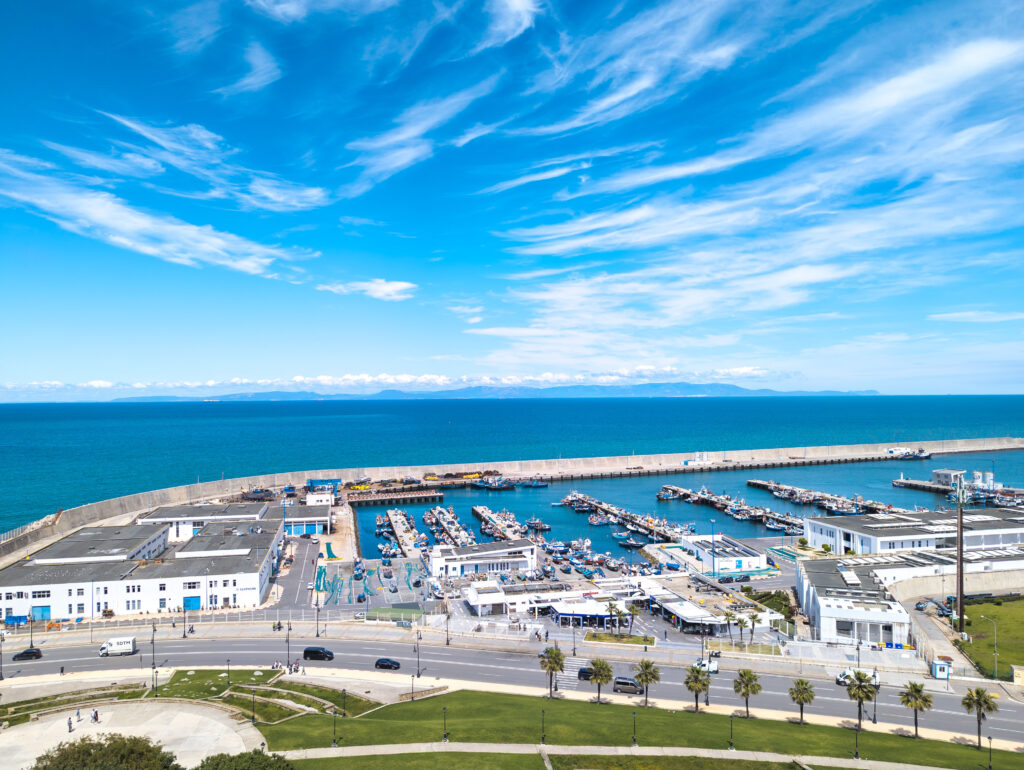
The Verdict: Windless Days Were Secretly the Best
By the end of my stay, I realized that the windy—or completely windless—days defined the trip more than the kitesurfing itself. Exploring Roman ruins, hiking sand dunes, wandering Moorish hilltops, and taking a whirlwind trip to Tanger enriched the experience far beyond what I expected.
Tarifa taught me that sometimes the best adventures happen when Plan A fails. And yes, windless days — while not ideal for flying kites — might just be the most memorable part of all.

